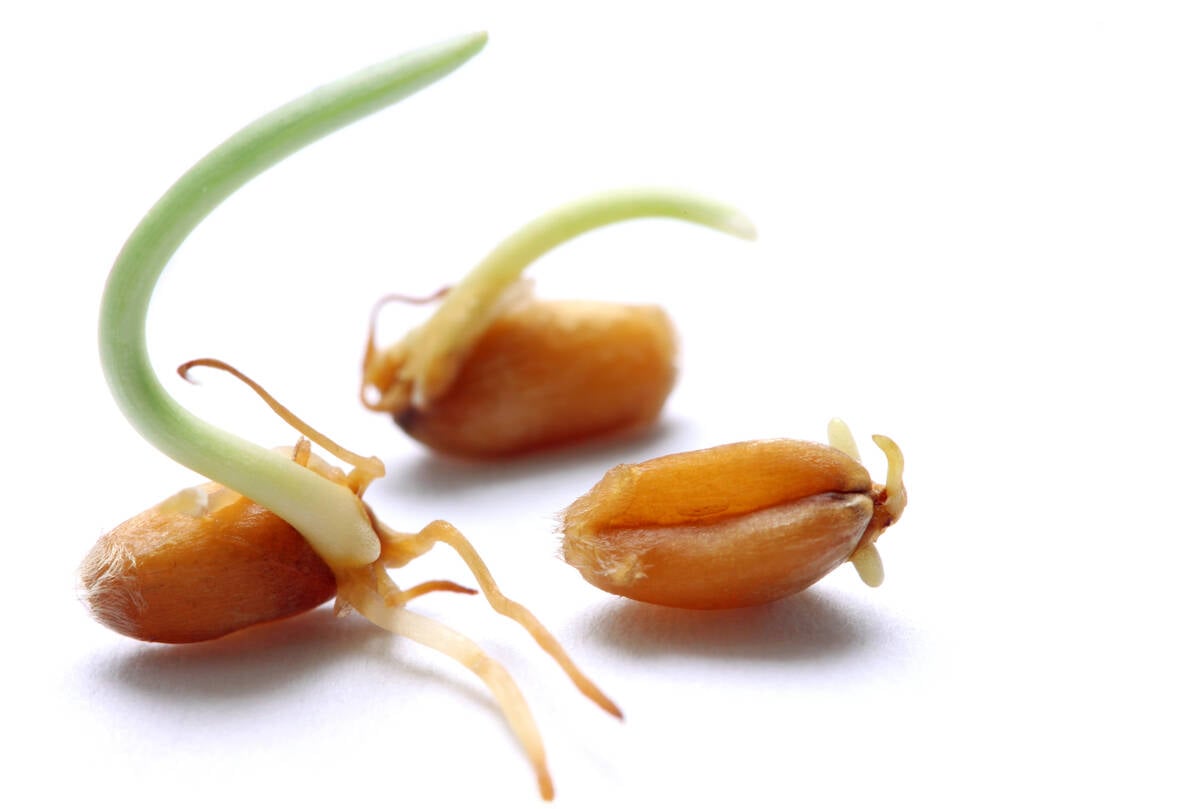Plants operate below capacity | Sales should increase in 2013 as customer stocks are depleted
Quarterly results for Alliance Grain Traders Inc. have become a broken record: hand-to-mouth buying has hurt sales but demand recovery is just around the corner.
Revenues for the year ended Dec. 31, 2012, were $855.3 million, up from $760 million the previous year. Earnings before interest, taxes, depreciation and amortization (EBITDA) were $39.4 million compared to $47.6 million in 2011.
Company president Murad Al-Katib said a return to normalized business was not fully realized last year, but there were signs of recovery in pulse markets toward the end of the fourth quarter and into this year.
Read Also

Manitoba farmers fight sprouted wheat after rain
Rain in mid-September has led to wheat sprouting problems in some Manitoba farm fields.
He assured analysts that demand is returning, which will lead to an earnings recovery throughout the year.
Capacity use at the company’s 12 Canadian pulse processing plants in the fourth quarter was similar to the third quarter, at just over 50 percent.
“We’re expecting the 2013 utilization to build back up to two-thirds utilization by mid-year,” said Al-Katib.
AGT, which is one of the world’s leading pulse processing companies, is contemplating expanding into soybean and cereal processing to boost activity at its Canadian plants.
However, the core business remains processing and exporting pulses, a segment that started picking up steam in December.
AGT’s market intelligence shows that local stocks of pulses in most key consumption areas are depleted and in dire need of replenishment.
That could happen this year with the anticipated global economic recovery. The Institute of International Finance, a global association of major banks, says lending conditions and trade finance in emerging markets are improving for the first time in two years.
As well, this year’s pulse production is expected to fall to 2008 levels, which should cut carry-in stocks in key consumption regions. Global lentil supply is expected to be three million tonnes, down from five million tonnes in 2010.
Christine Healy, an analyst with Scotia Capital Inc., agreed that AGT will experience improved margins and export volumes starting this year.
She forecasts EBITDA of $57.3 million in 2013 and $72.1 million in 2014.
Healy said in a company comment to investors that positive signals for AGT include recovering economies in emerging markets, lower pulse production in key consumption markets such as India and a forecast for a 15 percent decline in lentil seeded area in Canada in 2013.
She is also encouraged by the company’s expansion into the pulse food ingredient business.
“We view Alliance Grain’s expansion into food ingredients as strategically sound,” she wrote.
“It should allow the company to realize higher margins, increase its plant capacity utilization and reduce earnings seasonality.”
Commissioning of AGT’s facility in Minot, North Dakota, is expected to begin later in 2013, but it probably won’t be fully operational until the third quarter when it will produce pulse proteins, fibres, starches and flours for food, feed and pet food.
“We’re very excited about that new area, that I think will become a very meaningful part of our business,” said Al-Katib.
The North Dakota plant is expected to generate revenue of $75 million per year and EBITDA of $6 to $8 million once all three lines are operational some time in 2014. It is forecast to generate the best profit margins of any of AGT’s facilities.
Robert Winslow, an analyst with National Bank Financial, reminded Al-Katib that the investment community once counted on $100 million of EBITDA from AGT, although he noted that nearly every business has been adversely affected by the global economic slowdown.
He said the new consensus is for $70 million in EBITDA by next year and wondered if Al-Katib had any thoughts on that.
Al-Katib said he wasn’t allowed to provide earnings guidance, but added he’s excited by the company’s move into high-margin products such as chickpeas, beans, pasta, durum wheat, bulgur wheat and rice.
Lentil processing provided 85 percent of AGT’s revenues when it became publicly traded, but that has since fallen to 35 percent.















